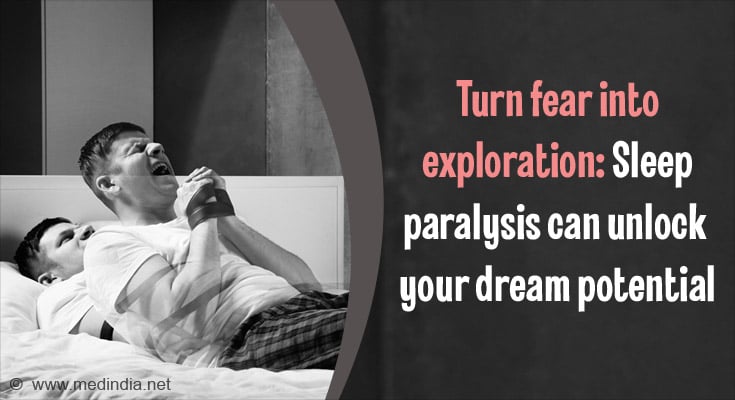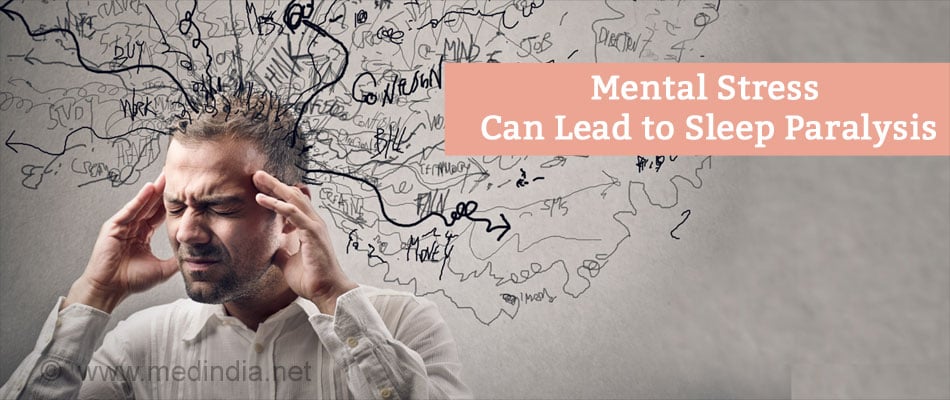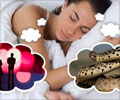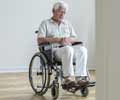- Sleep paralysis - (http://www.nhs.uk/conditions/sleep-paralysis/pages/introduction.aspx)
- Sleep Paralysis – Overview & Facts - (http://www.sleepeducation.org/sleep-disorders-by-category/parasomnias/sleep-paralysis/overview-facts)
What is Sleep Paralysis?
Sleep paralysis is a temporary inability to move or speak and it happens when the patient is trying to wake up or fall asleep.It can be very frightening experience. Some people might have sleep paralysis only once or twice in their lifetime. While some patients experience it a few times in a month or more frequently. It can affect people of all age groups but is most common among the teenagers and young adults.
Facts on Sleep Paralysis
- Most sleep paralysis (approx. 58%) attacks occur while the person is lying on their back in a supine position.
- Sleep paralysis frequencies are reported to be higher at the beginning and middle of the sleep, as opposed to the end of sleep.
- The length of an episode varies from a few seconds to several minutes.
- Sleep paralysis can also be a sign of substance abuse or a mental health disorder.
What are the Types of Sleep Paralysis?
Sleep paralysis occurs during a rapid eye movement (REM) sleep cycle, while the patient is awake. This makes it clear that REM cycle can sometimes occur while you are awake, but the reason why it happens remains a mystery.
Although, sleep paralysis is one of the symptoms of narcolepsy, it is said to be “isolated sleep paralysis” when it appears without any other signs of narcolepsy.

Recurrent isolated sleep paralysis is a parasomnia, which involves undesired events that come along with sleep. An episode of sleep paralysis lasts for a few seconds or minutes and causes one to be unable to speak, or to move the arms and legs, body, and head. The patient can still breathe normally and be aware of what is happening. The episode usually ends on its own, or when someone touches or speaks to the person having the dream.
Sleep paralysis are of two types based on the situation of the patient in which it occurs.
- Hypnagogic or predormital form: If the sleep paralysis occurs when the patient is falling asleep.
- Hypnopompic or postdormital form: If the sleep paralysis that occurs when the patient is waking up from sleep
What are the Causes of Sleep Paralysis?
Causes of sleep paralysis are as follows:
- Sleep deprivation or insomnia
- Irregular sleeping patterns - shift workers or jet lag
- Narcolepsy
- In cases of family history of sleep paralysis

What are the Symptoms and Signs of Sleep Paralysis?
- The main symptom is that the patient is completely aware of his surroundings, and he reports to be consciously awake during the experience. It is a part of waking consciousness, not as a dream. However, he is temporarily unable to move or talk.
- Patient feels anxious and afraid.
- Patients might hallucinate during an episode; which means they see, hear, or feel things that are not actually present.
- They may sense the presence of another person in the room.
- A sense of overwhelming fear with a feeling of impending death is experienced by the person.
- Difficulty in taking deep breaths, because of the feeling of chest being crushed or restricted.
What are the Risk Factors for Sleep Paralysis?
- Family history of sleep disorders
- Lack of sleep especially if the sleep schedule often changes
- Traumatic life events, anxiety, and depression
- Mental stress

How do you Diagnose Sleep Paralysis?
Recurrent isolated sleep paralysis is very common. The diagnosis is made by typical history of the onset, frequency, and duration of the paralyzing incident along with present or past drug history.
Patient must be very cautiously interrogated about the existence of any other sleep disorder symptoms in him or in his family members.
Maintenance of a sleep diary for two weeks will help the physician to track the sleeping patterns.
Besides this, few other tests are done. They are:
- Polysomnogram, which is an overnight sleep study, is done which helps to chart the brain waves, heartbeat, and breathing as the patient sleeps. It also records how the arms and legs move.
- Electromyogram (EMG): This recording will show the level of electrical activity in the muscles, which tends to be very low during an episode of sleep paralysis.
- Multiple Sleep Latency Test (MSLT): This is a daytime nap study and is done, if you are very sleepy during the day. It will help to show if your sleep paralysis is a sign of narcolepsy.
How do you Treat and Prevent Sleep Paralysis?
Treatment and prevention of sleep paralysis go hand in hand.
Sleep paralysis often gets better over time, by improving the sleeping habits and sleeping environment.
- Adopt a regular sleeping pattern – most adults need six to eight hours of good quality sleep at night.
- Go to bed at roughly the same time each night, and get up at the same time each morning.
- Create a comfortable sleeping environment, which is quiet, dark and not too hot or cold.
- Avoid heavy meals, smoking, or drinking alcohol or caffeine shortly before going to bed.
- Exercise regularly.
If the sleep paralysis is very severe, antidepressant medication such as Clomipramine may be taken, (to reduce or eliminate deep sleep) but must be prescribed at a lower dose than used for depression.
Treatment of sleep paralysis is cause specific. If, sleep deprivation is the cause for it, try to get at least six to eight hours of sleep per night.
If however, the sleep paralysis attacks cannot be prevented, it is advisable to develop effective coping strategies to employ in case of an attack. A number of such strategies have been suggested and different methods seem to work for different people. The attacks of sleep paralysis end or subside when the paralysis is broken.
Some popular management techniques to break the paralysis if it has already set in include:
- Disassociate yourselves from the attack. Rather than allowing you to become immersed and victimized in the attack, adopt a third person stance, observe your body and the environment as objectively as possible. This can make the experience less overwhelming and frightening.
- Avoid sleeping on your back to reduce the chance of attack.

- Stay calm during a sleep paralysis attack by trying to relax and breathe normally. This is the most important factor to reduce the length and intensity of an attack.
- Concentrate intensely on moving one small muscle, such as the little finger of your hand or toe, which can lead to a tiny movement that can break the paralysis and end the attack.
Health Tips
- Set a regular sleeping pattern
- Have a light dinner
- Avoid caffeine and tobacco
- Practice deep breathing yoga and exercises














